
Introduction to Juneau, Alaska
I arrived in Juneau less than two weeks ago on a long 20-hour, three-flight trip up from Florida, where it was a balmy and sunny blue-sky day in the 70s F.
My visit to Juneau was not a long-planned or anticipated trip, like the majority of my travel destinations are. In contrast, my Alaska adventure was the result of a last-minute decision and sudden diversion from my intended two-month trip to the Dominican Republic in the Caribbean Sea. How that came about is a whole other story, which I wrote about here.
I suppose I had heard of Juneau, Alaska before. But I knew nothing about the place. Not its location or geography. Not its history, cultural aspects nor points of fame. And since my trip was a last-minute rush job, I didn’t have much time to research or learn about the place I was about to stay for two months, in winter weather. I briefly noted Juneau’s location on a map and checked the projected weather for February and March. That’s all the farther I got.
Upon arrival in Juneau, the first things I noticed were that the main road running out of town is called Glacier Highway and that the town’s waterside park lines the exotically-named Gastineau Channel. My blood started racing and my eyes widened as I instantly imagined a bunch of extreme, cold-climate adventures and discoveries.

And Juneau certainly lives up to that. Just a few miles out of town is Alaska’s most easily-accessible glacier, Mendenhall Glacier. From the visitor’s center parking lot you can clearly see the massive glacier lodged on the far side of broad Mendenhall Lake.
Small Juneau town itself is surrounded by tall, rugged snow-capped mountains, where avalanches commonly crash down, even on the edges of town, Even halting traffic and stranding residents out at their coastal homes on occasion.
This is also where Alaska’s famed wild salmon come back each year to spawn in regional rivers, and where they are grabbed up by eager brown and black bears. Here, too, humpback whales and orcas can regularly be spotted, sometimes even from shore. Bears roam across hikers’ trails in summers. American Eagles glide on high air currents overhead.
And these are just a few major highlights of Juneau. For now, let’s dig into Juneau’s location, geography and history…
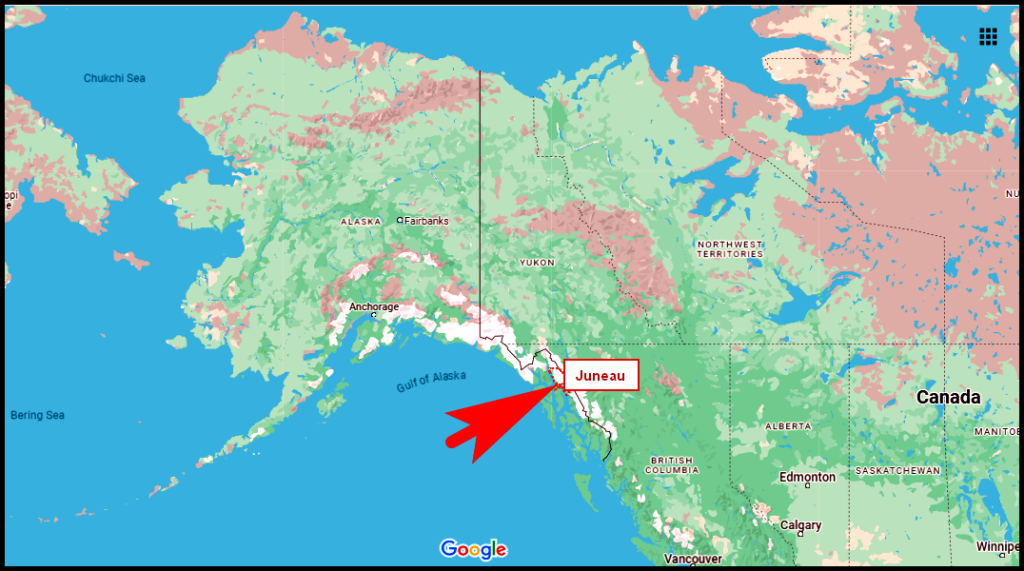
Location and Geography of Juneau
Juneau is located far south of the main territory of Alaska, in the Alaska Panhandle (who knew there was an Alaskan Panhandle?!). It’s a long narrow strip of coastal land with a series of long peninsulas, an archipelago of mountainous, Spruce-covered islands and a whole slew of sea channels running between them all. The panhandle borders Canada’s territory of British Colombia, on a map looking much more like a part of BC than Alaska.
The panhandle region is usually referred to as Alaska’s Inside Passage, one of five designated regions of Alaska. The Inside Passage runs for 500 miles along the coast, providing natural boatways protected from the open Pacific Ocean. Most of the area is set within Tongass National Forest, which is America’s largest national forest and the world’s biggest Temperate Rainforest. Huge gobs of algae and lichen hang down from native Spruce trees in the region, a sight very rare for such a cold climate.
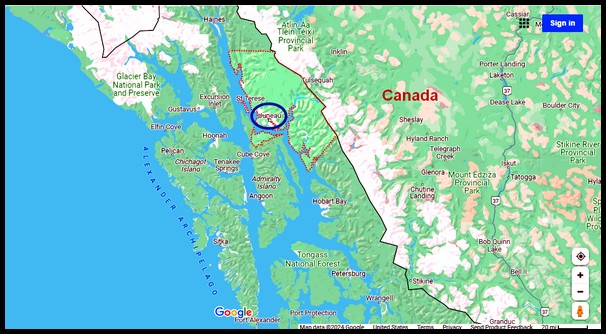
Juneau is located right in the middle of the Inside Passage, set on a small triangular plot of coastal land along the Gastineau Channel, and nestled at the foot of two towering domed mountains. Just across the rather narrow channel is mountainous Douglas Island, which is connected to Juneau by an arched steel bridge. Residential areas are located in downtown Juneau, over on Douglas Island, out in nearby Mendenhall Valley, and scattered along the channel.
High above in the mountains, the massive Juneau Icefield stretches across the mountain ranges, completely cutting off Juneau from the rest of the mainland. The icefield is as big as the state of Rhode Island and is the source of all of the region’s glaciers.
A special distinction of Juneau is that there are no roads in/out of Juneau! The only way to access the town is by flight or ship.
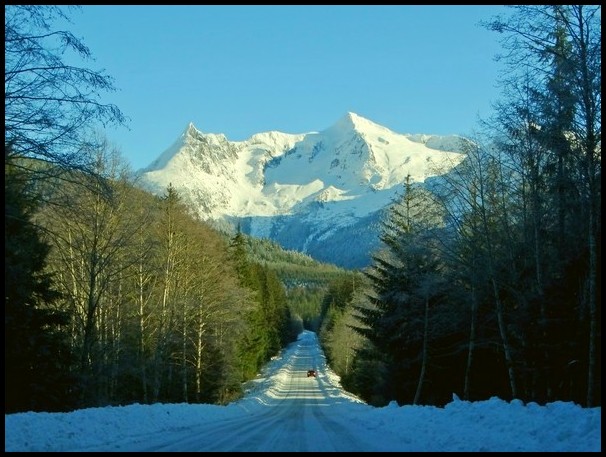
However, Juneau does have a short road system. A coastal road runs south from town for five miles, dead-ending at Point Bishop-Dupont Trailhead. Over on Douglas Island, a coastal road runs along most of the eastern side of the island, where the town of Douglas is situated, and up around the northern end of the island, dead-ending on the upper west side. One road also leads up to Eagle Ski Resort, situated high in the middle of the island.
Juneau’s longest road runs along the coast northward for 40 miles to narrow and beautiful Echo Cove. Along the route are spectacular, panoramic views along the channels and across to rugged mountain ranges stretching to the horizon. There are also several small state park areas, bays, hiking trails and boat ramps along the way.
Another distinction of Juneau is that it has five times more miles of hiking trails than roads! A total of 250 miles of trails run through forests, along the coasts and up into the mountains vs about 50 miles of roads.
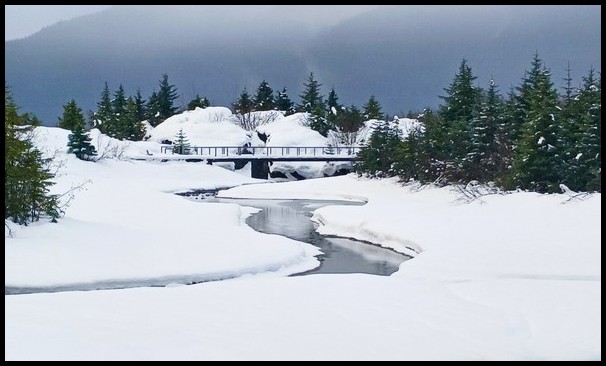
Climate in Juneau
Juneau does not have the typical freezing-cold winters found in most of Alaska. In fact, amazingly, winters in Juneau are actually milder than in many other parts of the USA, such as western Pennsylvania and Iowa. Literally.
The average daytime temperatures in Juneau in January, February and March are in the low to mid 30s F (just above/right around freezing), while nighttime averages are in the mid-20s F.
In the two weeks I’ve been here, in late January and early February, daytime temps have fluctuated from 40 F to 20 F, while nighttime temps have run between about 18 F and 35 F. Some days it is warmer here in Juneau, Alaska than at my friend’s house in western PA!
Juneau’s relatively mild climate is a result of all the water and complicated weather patterns running through the islands and channels of Alexander Archipelago.
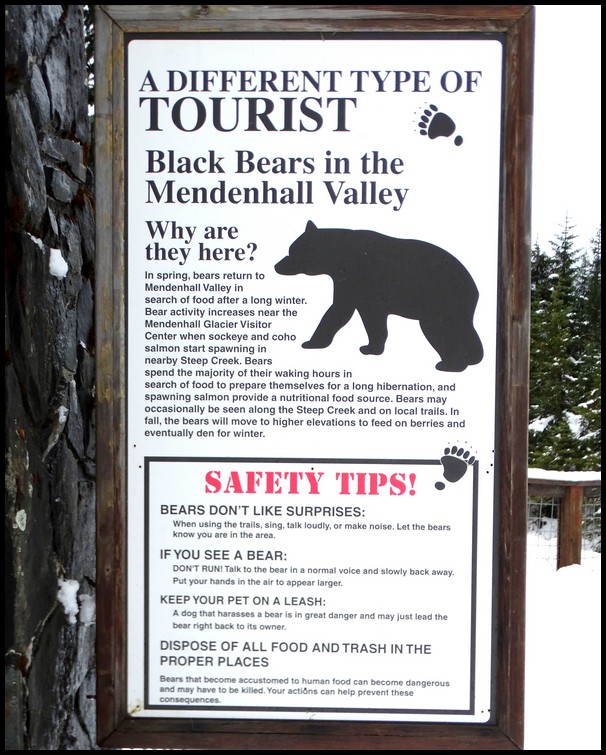
Wildlife in Juneau
This part of Alaska is more or less completely immersed in rugged nature, where plenty of wild animals still live and pass through. This is where five species of salmon come each season to spawn in rivers.
Brown and black bears come out of hibernation in spring to forage on plants until the salmon arrive, at which time bears head to the rivers to scoop fish out of rivers to fatten themselves up for winter. From spring through autumn, bears are roaming the forests and mountains around Juneau. Hikers must always be on the look out.
American Eagles soar overhead most times of the year. Plenty of other land and marine birds also brighten up the skies with individual songs and birding habits.
Humpback whales and orcas regularly pass through the Gastineau Channel and other wider waterways of the Alexander Archipelago, where the Inside Passage weaves between islands. Dolphins and sea lions also call these waters home.

Brief Ancient History of Juneau
The region around Juneau was inhabited for thousands of years by several indigenous tribes, most notably the Tlingit (pronounced ‘kling kit’), Auke, Taku, Haida and Tsimshiam tribes. They thrived on the rich land and sea waters, fishing and gathering other marine foods in Gastineau Channel. They developed sophisticated social communities, nature-based religions and beautiful art traditions, including totem poles, wood carving, weaving, singing, dancing and oral story telling.
Descendents of Tlingit, Haida and Tsimshian and their cultures are a prominent and important part of the Juneau population.
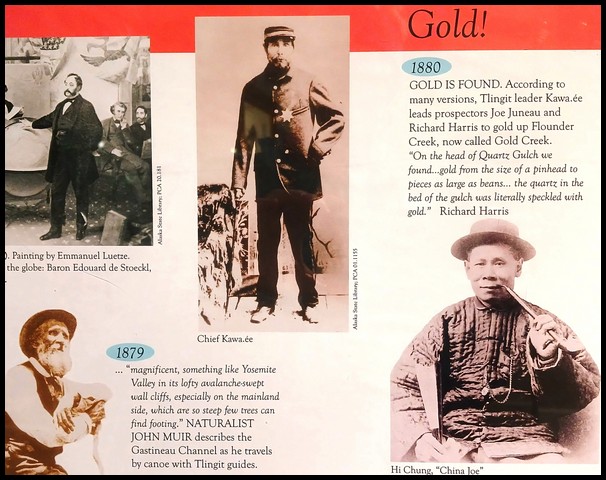
Brief Modern History of Juneau
Indigenous tribes of this region were able to continue their traditional lives unimpeded by western ‘invaders’ for a few hundred years longer than indigenous cultures in the rest of North America, Mexico, Central and South America. While the Spaniards began colonizing Mexico, South and Central America in the mid 1400s to mid 1500s, and the east coast of north America was colonized in the mid 1600s by the British, nobody disturbed tribes in the Juneau region until the late 1800s.
Finally, in 1880, gold prospectors arrrived in the area from nearby Canada and the northern US west coast. A native showed them where gold could be found in local streams, unwittingly kicking off the huge Klondike Yukon Gold Rush. Very quickly hordes of eager prospectors rushed to the area and soon established the mine town of Juneau, which began in 1880 with 40 gold prospectors.
For a decade gold could be easily panned from local streams. When that ran out, several major underground mining operations started up on the outskirts of Juneau and across the channel on Douglas Island.
Juneau developed rapidly and by the early 1900s had a post office, schools, churches, stores, saloons, police station and fire department By 1917, Juneau had all the latest modern technologies, including telephones, electricity and hot water.
For several decades Juneau was the heart of the Klondike Gold Rush and most prosperous town on the northern coast. Called the ‘Gold Capital of the World’, Juneau had an indoor swimming pool, lavish balls and a luxurious lifestyle for many.
But after WWI a combination of factors, including avalanches, mine collapses, post war depression and a huge drop in gold prices, caused most mines to close. One mine managed to hang on until after WWII. And then, gold mining in Juneau was pretty much over.
Meanwhile, in 1906, tiny little Juneau was named Alaska’s state capital. Previously the captial had been at equally tiny Sitka, another gold outpost situated much further out on a nearby island. Rather amazingly, Juneasu has remained the state capital to this day. That means Juneau has been destined to remain an important and flourishing town in Alaska, regardless of the mining industry.
In addition, a few other industries flourished in Juneau. They included salmon and halibut fishing, fish canning factories, and a tourist industry that slowly got started in the 1920s, partly due to a visit by renowned nature photographer, John Muir.
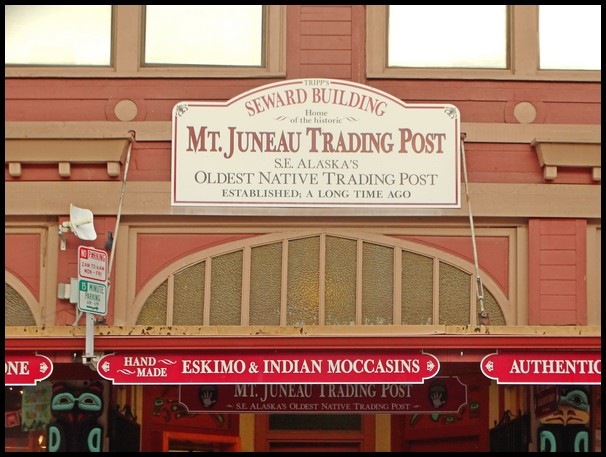
Juneau Today
Today Juneau has a year-round population of about 33,000. It’s a surprisingly diverse international population. Descendents of various tribal people still call Juneau home. Historically, Filipinos arrived to work the fishing industry and Chinese to work the mines.
Throughout the 1900s and early 2000s a trickle of caucasians have relocated to Juneau, mostly from around the USA, but also from England, Canada and Europe. More recently, many Jamaicans and Polynesians from Pacific Islands have also moved to Juneau.
The main economic forces in Juneau are government and tourism, with smaller fishing and canning industries. In terms of tourism, Juneau is the main port of call for cruise ships visiting the Inside Passage, cruising in Alaskan waters to witness glaciers, whales, bears and other wildlife. Six major cruise lines dock in Juneau and in 2023 a record 1.6 million cruise ship passengers passed through Juneau!
The main tourist season, coinciding with cruises, lasts for five months, from May through September. During off-season Juneau is a very quiet, peaceful little town with just a handful of visitors.
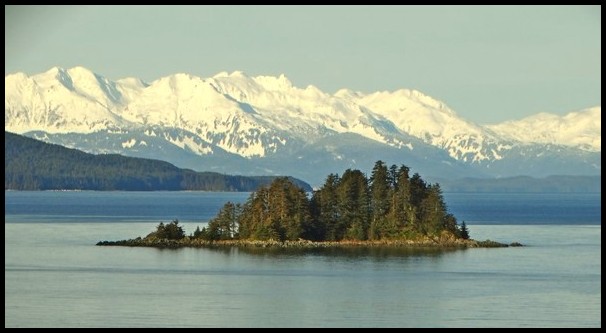
Main attractions and points of fame
Juneau has several major attractions for cruise ship passengers and other visitors. Most cruise ship passengers are whisked away on various day tours that include whale watching, gold mine tours, summer dog sledding, helicopter and small plane rides over glaciers, fishing trips and other adventures.
One of Juneau’s biggest attractions is the aforementioned Mendenhall Glacier, located just a few miles outside town. To the side of the glacier is roaring Nugget Falls, heard from the parking lot and accessed by a short, flat one-mile trail. There are several other trails heading up into the mountains, while the visitor’s center provides plenty of information about the glacier, native animals and flora.
Downtown Juneau has a small, quaint historic district full of shops, indigenous arts, restaurants and beautiful historic homes. Juneau City Museum, Alaska State Museum and a handful of important historic civic buildings are worth visiting. Goldbelt Tram takes visitors up to the top of Mount Roberts for panoramic views and hiking trails.
Visitors can also check out the Salmon Hatchery to learn about the life cycle of salmon or drive out along the channel 40 miles northward to the end of Juneau’s only road, set at narrow finger-like Echo Cove.
Fitness buffs can hike any of the 250 miles of trails in the area. And of course, everyone wants to eat wild Alaskan salmon and other local seafood specialties.
In winter, there’s skiing, sledding, cross-country skiing, snow-shoeing, hiking and the chance to see Aurora Borealis and possibly whales from shore.
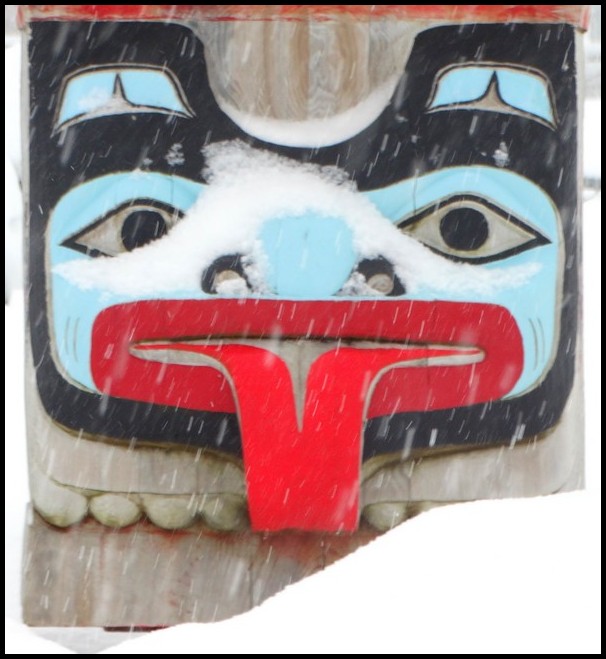
Summary
As you can see, Juneau is an important, beautiful and exciting town in southeastern Alaska. As the state capital and main cruise ship port along the Inside Passage, Juneau also has an intriguing history from gold mining days, salmon fishing and the cultural presence of several indigenous tribes.
Many of Alaska’s iconic natural features and wildlife can be found in Juneau. There are glaciers, Spruce forests, temperate rainforests, bears, whales, American Eagles and many other fantastic wild creatures roaming the region.
I will be staying in Juneau for another two months, so stay tuned for heaps more info and photos from gorgeous Juneau, Alaska!
=======================
You might also enjoy:
How I ended up going to Alaska in early 2024
35 Highlights of my Travels around South America
=======================







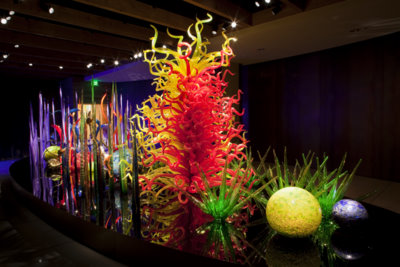

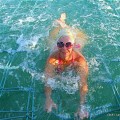

 Hi! I'm Lash, an American nomadic world traveler who's been traveling solo since 1998. I’m passionate about traveling the world nomadically and then sharing it all with you. I hope to inspire you to travel the world, to entertain you with tales from the road, and to help you reach your travel dreams. Welcome!
Hi! I'm Lash, an American nomadic world traveler who's been traveling solo since 1998. I’m passionate about traveling the world nomadically and then sharing it all with you. I hope to inspire you to travel the world, to entertain you with tales from the road, and to help you reach your travel dreams. Welcome! 




4 pings
8 Great Benefits of Visiting Juneau, Alaska in Winter - LashWorldTour
2024/02/19 at 4:40 am (UTC 8) Link to this comment
[…] « Introduction to Juneau, Alaska […]
All About Mendenhall Glacier in Alaska - LashWorldTour
2024/02/25 at 12:20 pm (UTC 8) Link to this comment
[…] Introduction to Juneau […]
13 Intriguing Facts about Alaska - LashWorldTour
2024/03/07 at 10:19 am (UTC 8) Link to this comment
[…] Introduction to Juneau, Alaska […]
9 Surprising Things about Juneau – Alaska - LashWorldTour
2024/03/11 at 8:49 am (UTC 8) Link to this comment
[…] I didn’t actually know anything about Juneau before I came up here. But since then, I’ve learned many, many interesting and surprisingly things about this wonderful little corner of Alaska. I previously wrote an introduction to Juneau here. […]